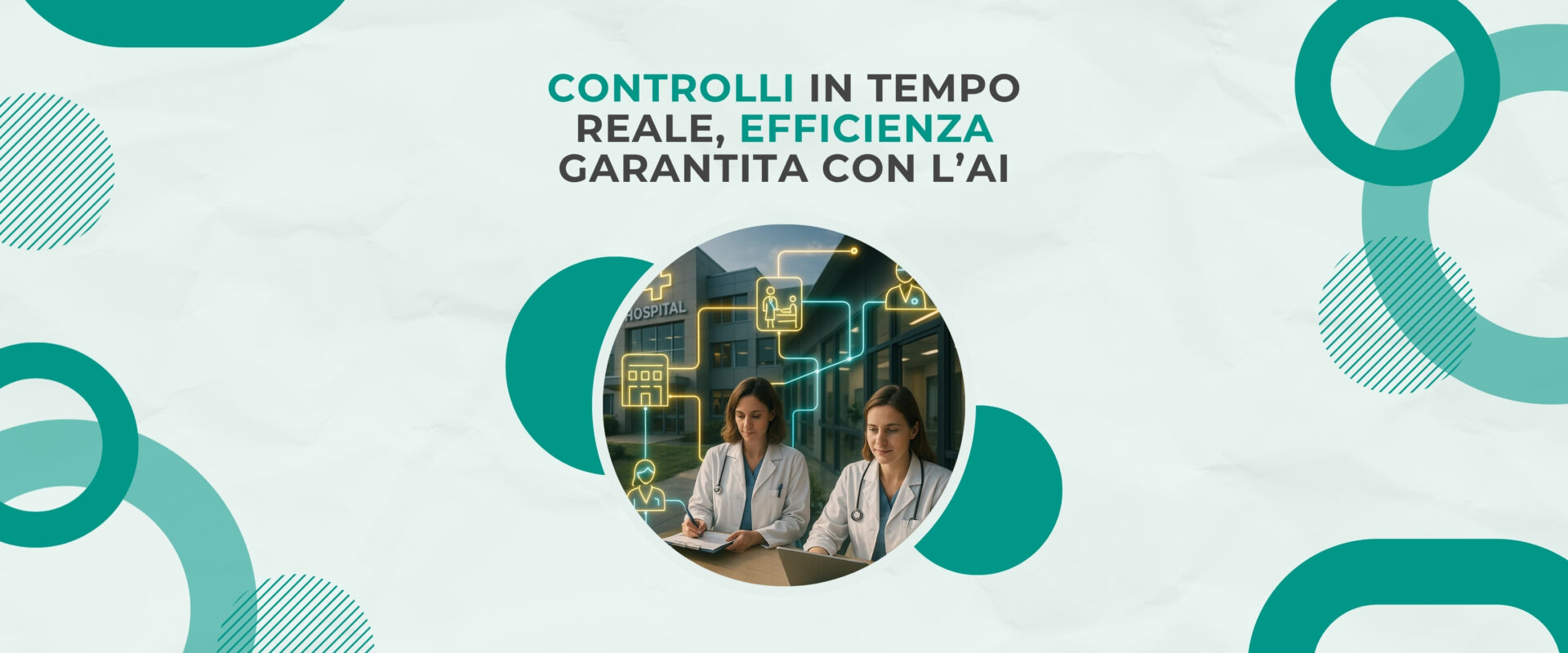In modern healthcare and social care organisations in the UK and Ireland, there is growing pressure to maintain high standards of quality, safety, and regulatory compliance, often with limited resources. How can staff ensure protocols, rotas, bed usage, and compliance are properly monitored without overburdening daily operations?
Today it is possible to introduce a real-time automated auditing system powered by Artificial Intelligence (AI). This solution can analyse clinical documentation instantly and flag any deviation from protocols, regulations, or quality standards. Internal auditing is no longer a retrospective exercise but becomes a proactive and continuous tool, providing tangible operational benefits for hospitals, care homes, and day centres.
In social care settings, the same logic applies: AI can monitor personalised care plans, ensure functional and cognitive assessments are carried out correctly, and track adherence to fall prevention or medication administration protocols. An AI Risk Manager can quietly supervise care quality, helping detect non-compliance before incidents occur.
From sample checks to continuous monitoring
Traditionally, quality and compliance checks in hospitals and care settings were conducted retrospectively or on a limited sample. This meant inappropriate practices or breaches were detected weeks or months later.
With AI, auditing becomes continuous and timely: the key innovation is shifting from periodic inspections to constant, real-time monitoring. Intelligent auditing algorithms can analyse clinical and administrative data continuously, flagging non-compliance against rules set by the organisation.
AI acts as a “digital nervous system,” detecting anomalies immediately and allowing staff to intervene right away.
In social care, where inspections are often periodic and documentation-focused, an AI Risk Manager ensures ongoing oversight: from infection control and safe handling procedures to compliance with mobilisation and risk-prevention protocols. Issues that would normally only emerge during annual inspections are now detected and resolved in real time.
Operational benefits: efficiency and risk reduction
AI-enabled clinical and care auditing platforms can significantly reduce analysis times: evaluations with minimal error can be produced in a fraction of the time compared to manual methods, reducing waiting times from days to minutes.
This brings substantial savings in human and financial resources, freeing staff from lengthy manual audits, reducing review costs, and lowering clinical and legal risks.
Accuracy also improves: AI can analyse large datasets and highlight inconsistencies, coding errors, or anomalies that human oversight might miss.
In the social care context, this means more reliable recording of geriatric assessments, medication administration, and supervision of restraint use. An AI Risk Manager can alert if, for example, a care plan has not been updated after a fall, or if a medication requires clinical review.
Safety of residents and patients always at the centre
A key area where AI auditing brings benefits is patient and resident safety. Procedures like surgical safety checklists, correct patient identification, and fall-risk assessments are core pillars in hospitals.
In daily practice, checklists may be incomplete or assessments missed. AI can monitor these automatically and flag omissions.
In care homes and day centres, AI can verify if a resident’s care plan includes updated risk assessments, cognitive evaluations, or preventive measures after an incident. For example, if a resident with mobility issues is missing a fall-risk assessment, the AI Risk Manager immediately alerts staff, preventing potential accidents.
Resource optimisation and waste reduction
AI also improves resource management: hospital beds, operating theatres, diagnostic equipment, and staff time. Facilities must avoid overcrowding but also underuse, which generates inefficiency.
AI monitoring tracks key indicators such as bed occupancy, theatre utilisation, waiting times in A&E, and length of stay by diagnosis. Any deviation is immediately reported.
In social care, AI can monitor care home occupancy, staff shift allocation, or therapeutic service utilisation (physiotherapy, occupational therapy). An AI Risk Manager flags both overloading and underuse, supporting efficient and safe operations.
Accreditations and regulatory compliance
Hospitals and care providers must comply with multiple standards: CQC inspections, NICE guidelines, ISO certifications, and NHS policies. Preparing for audits is often a significant administrative burden.
AI can structure data from multiple sources (electronic health records, HR systems, maintenance logs) and automatically verify compliance daily.
In care homes and day centres, AI can check:
- All resident records include updated personalised care plans.
- Equipment (hoists, beds, oxygen systems) undergoes required safety checks.
- Medication, nutrition, and hydration records are complete.
The AI Risk Manager reduces inspection stress and makes compliance an everyday practice rather than a last-minute rush.
Quality indicators under control
AI auditing also adds value in monitoring quality indicators: hospital-acquired infections, readmissions, surgical wait times, or length of stay.
In social care, indicators include falls, significant weight loss, pressure ulcers, or resident/family satisfaction. AI continuously monitors these, alerting when thresholds are exceeded (e.g., a fall rate above 8 per 1,000 bed days).
A strategic ally across healthcare and social care
Adopting a real-time AI auditing system is not just a tech upgrade—it is a governance leap. It reduces risk, improves transparency, and supports continuous improvement across hospitals, care homes, day centres, and home care services.
AI allows management to anticipate issues, allocate resources efficiently, and build trust with patients, residents, families, regulators, and professionals. The AI Risk Manager becomes a cross-sector strategic ally, raising safety and quality across the entire health and social care system in the UK and Ireland.
